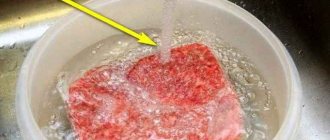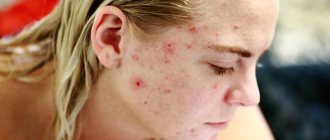Sometimes an ordinary pimple becomes a disaster, causing you to cancel important events. Needless to say, if there is an inflamed boil or even more than one on the face. With dermatological imperfections that appear in open areas, a person begins to feel constrained, insecure, and communication problems appear.
A boil is quite dangerous due to its complications, since from the location of the problem the infection can spread throughout the body when it penetrates into the blood. Almost everyone experiences acne and everyone has at least a little idea of how to deal with it. But few people have any idea how to treat a boil on the face if they have not encountered them before. If measures are not taken in a timely manner, or incorrect therapy is allowed, then a severe complication of this disease is possible - infection of the brain.
Etiology of boils
The fundamental and most common cause of the development of the disease is Staphylococcus aureus, less often another type of microorganism (staphylococcus epidermidis, streptococcus, etc.).
The list of other reasons that create a favorable environment for staphylococcus includes:
- Poor hygiene;
- The presence of wounds or damage to the dermis of the face through which infection penetrates;
- Thin dermis;
- Hypothermia;
- Weakened immunity;
- The presence of ailments of the liver, nervous system, kidneys, digestive system organs, etc.;
- Skin ailments (fungi, eczema, dermatitis);
- Taking antibiotics for a long time.
Accurate identification of the primary cause of the disease will allow you to better determine what and how to cure the boil.
Clinical picture of the disease
A purulent boil can be distinguished from a pimple by the specific symptoms of the disease. Moreover, the manifestation of the disease varies depending on the stage:
- The first stage is characterized by the presence of itching sensations;
- The second stage is an internal boil, which from the outside looks like a reddened tubercle, painfully palpable when touched. At this stage, pus begins to accumulate in the affected follicle;
- At the third stage, a necrotic core appears, consisting of dead tissue surrounded by pus. At this stage, weakness, headache, and even fever may appear;
- The fourth stage is the breakthrough of the boil and healing of the wound;
- The fifth stage is the healing stage. Symptoms (swelling, pain, etc.) go away, a bright scar appears, which will go away with time.
To decide how to quickly treat a boil that has formed on the face, it is important to promptly contact specialists who will prescribe competent treatment.
Signs and stages of development of pathology
Furunculosis develops gradually.
- First stage. There is an itching sensation in a certain part of the face. In this place under the skin there is a rapid proliferation of pathogenic microbes that have found themselves in conditions suitable for their life.
- Second stage. The affected area of the skin begins to redden, swell, and pain appears. After this, the bulge takes on a cone-shaped shape. There is an accumulation of pus in the center of the abscess.
- Third stage. 5 days after the abscess appears, a dark dot (necrotic core) forms inside it. At the same time, the person feels lethargic, headache, and a slight fever.
- Fourth stage. After a month, the boil matures and breaks through, the tissues are cleaned, and the wound gradually heals.
- Fifth stage. All symptoms of the pathology disappear, a large scar forms in place of the healed wound, which fades over time and becomes almost invisible.
READ ALSO: Furunculosis - traditional treatment
Please note that this development mechanism is inherent in mild forms of furunculosis. If the disease is not treated, the face will be affected by several boils at once. In advanced cases, boils merge with each other and form a large area of pus accumulation. Intoxication begins and the general condition of the whole body worsens. Ultimately, the disease becomes chronic.
Differences between a boil and a regular pimple
Although these two problems have external similarities (you can see photos on the Internet), the consequences from them are completely different. Therefore, you should clearly distinguish them from each other in order to understand how to treat and how to cure them:
- For the first few days, at the site where the boil appears, you will see a bright red spot with blurred boundaries. A slight compaction will be felt to the touch;
- When touched, you can feel that the skin in this place has a slightly higher temperature. This indicates an inflammatory process inside;
- Under the skin, a person feels a slight tingling and slight itching;
- The place where the boil ripens is very painful from the first days of its formation. Often there is swelling around the formation;
- Often the formation of a boil is accompanied by an increase in body temperature, headaches and enlarged lymph nodes, especially not far from the location of the formation;
- It takes little time for a pimple to mature. But the boil takes much longer to mature. This is due to the fact that, unlike a pimple, the latter is located much deeper.
If you do not know what a boil looks like and are not able to independently determine what the formation on your face is, then you need to consult a doctor. Otherwise, trying to solve the problem yourself at home may result in even bigger problems.
Another difference is that a pimple usually goes away on its own in a couple of days, while the development of a boil takes much more days.
The formation of boils on the face entails physical and psychological discomfort. Unlike a regular pimple, without proper treatment, an abscess can cause a number of life-threatening consequences. Boils on the face should be treated with caution, after consulting a doctor.
Causes
Before starting treatment for furunculosis, you need to find out what caused it.
Most often, the formation of boils is caused by Staphylococcus aureus. It penetrates wounds, cracks in the skin, hair follicles and starts the inflammatory process. But such a development of pathology is only possible if a person has skin problems:
- susceptibility to microtraumas,
- oily skin with clogged pores,
- acne, pimples,
- skin lesions such as atopic dermatitis, eczema,
- damaged epidermal barrier.
Other factors may also influence the development of furunculosis:
- fungal infection that destroys the epidermis,
- impaired metabolism, which is responsible for the regulation of all processes in the body,
- malfunction of the liver, which cleanses the blood of toxins,
- diseases in which secretions of mucus and pus can get on the skin and cause inflammation (sinusitis, acute runny nose),
- lack of vitamins,
- hypothermia or overheating,
- intestinal dysbiosis, in which bacteria spread throughout the body, enter the skin and begin to multiply there,
- reduced immunity.
Stages of ripening and features of localization on the face
From the onset of the first symptoms of illness to the healing of the skin tissue, the boil goes through 3 stages.
- At the infiltration stage, redness with slight thickening appears on the skin. The seal increases in size. Swelling, itching, local hyperthermia, and pain occur. The subcutaneous lump is inactive.
- During the purulent-necrotic period, the core of the boil appears on the compaction - a white purulent head. After a further course, the purulent contents of the boils will come out. Accompanied by acute pain and tingling. A slight touch brings discomfort.
- The healing stage begins after the abscess breaks through. A cavity forms at the site of compaction. The size depends on the depth and scale of the chirp. On average, the healing process lasts 2-4 weeks.
A boil can pop up on any part of the face. Often found on the chin, cheeks, and nasolabial triangle. They appear on the forehead in the area of hair growth and are large in size. Less commonly, boils can be seen on the eyebrows and nose. Abscesses in the temple area are large. Facial ulcers are the most dangerous. When the infection spreads, there is a high risk of dangerous diseases, including meningitis.
The boil has broken through: what to do next and how to treat it
A boil on the body causes a lot of unpleasant and painful sensations. The appearance of ulcers does not go unnoticed by the immune system, which begins to bombard the affected area with white blood cells.
This creates pus, which eventually forms into a necrotic core under the skin. Sooner or later, the boil opens and is cleared of pus.
Most often, the suppuration opens on its own, so many people are interested in what to do when the boil breaks out.
Stages and symptoms of boils
The average period for full ripening of boils is about 10 days. During this time, suppuration goes through the following stages of development.
Infiltration formation stage
Initially, an infiltrate appears on the affected area of the skin - this is a place of swelling, redness and thickening. The area is very painful, causing discomfort even from the touch of clothing, sometimes itching or causing a tingling sensation. The forming boil gradually increases in size.
Purulent-necrotic stage
In the middle of the swelling, a purulent rod forms, the cone-shaped tip of which begins to protrude above the surface of the boil. The infiltrate becomes like a dense tumor. The sore spot increases, and the inflammation of the hair follicle and the amount of pus also increases. The purulent core looks like a dirty yellow cap over the boil and can reach 2-3 cm in diameter.
The pain intensifies and sometimes becomes unbearable. Patients' body temperature rises, they feel general malaise and weakness. The skin holding the rod gradually softens and bursts.
This is how the purulent contents of the boil come out, along with which a dirty bloody liquid flows out.
The patient feels much better - the pain subsides, the swelling subsides, the fever goes away and the body temperature normalizes.
Healing stage
After opening the suppuration, an open wound remains in its place, sometimes quite deep. The healing time depends on the size of the lesion. The area after a small abscess heals for 3-4 days, a large boil will take more time to heal.
The boil goes through 3 main stages: infiltration, purulent-necrotic and healing stage (after a breakthrough).
Sometimes several boils merge into one large abscess called a carbuncle. The formation of a carbuncle is promoted by severe disorders of the human immune system. The pathogenic process is often formed as a result of complications of staphylococcal folliculitis.
Why does a boil burst?
The boil opens as it matures. Under the influence of the negative activity of staphylococci, the hair root and the sebaceous gland located next to it melt, and the affected area increases. The human immune system never stops fighting foreign microorganisms and attacks it with white blood cells. From this moment on, the boil can open at any time.
The boil begins to burst when the amount of pus reaches its maximum. In the speedy breakthrough of the abscess, the body’s defenses are of great importance.
After the boil has burst, it is necessary to free the wound from pus and treat the abscess with disinfectants and anti-inflammatory agents. When the boil has already burst, the patient's condition improves significantly.
A boil has burst - what to do?
How to treat a boil that has broken through the skin after it has fully formed? The most important thing at this stage is complete and timely treatment of the opened wound. If you do not treat the suppuration, then in place of the burst boil you can get a new problem.
Untimely treatment of an opened abscess often leads to such a complication as severe furunculosis. This disease is characterized by the fact that purulent inflammatory processes can spread throughout the body, and furunculosis cannot be cured without the help of strong antibiotics.
It is necessary to carefully ensure that the purulent core comes out of the wound. Ideally, after opening the suppuration, the rod comes out entirely, but for several more hours a small amount of fluid may flow out of the wound.
Next, the opened wound must be washed with alcohol or hydrogen peroxide. It is best to treat an opened boil with bandage tampons soaked in preparations, moving from the edges to the center.
Then use a new swab to treat healthy areas of skin around the wound.
Possible consequences
There are a number of negative consequences of improper treatment and treatment of a burst boil:
- The boil broke through, but was not treated with disinfectants and antibacterial drugs. There is a real danger that pathogenic microorganisms contained in the pus from the boil will infect healthy areas of the skin.
- The most dangerous possible complication after a boil bursts is blood poisoning and purulent meningitis. Suppurations on the face, neck or head should only be treated under medical supervision.
An internal boil poses a serious threat. It is located in the deep layers of the epidermis and grows not outward, but inside the human body. It is difficult for it to mature and may not break through for a long time. A boil growing inside cannot be treated at home - a surgeon must help open such suppuration.
Which doctor should I contact?
If the problem occurs in a child or a pregnant woman, a visit to a medical facility cannot be postponed. In other cases, depending on the size of the suppuration, the patient’s well-being, his age and other concomitant diseases, the problem can be treated in a hospital or at home.
A small single boil can be shown to a dermatologist or therapist.
If a boil has ruptured, it is best treated in a surgery room. A visit to the surgeon cannot be postponed. Within a few hours, all the pus will usually leave the wound, and surgical debridement will no longer make sense.
Antiseptics for drawing out pus
You can treat a burst boil with antiseptic agents after disinfecting the open wound with hydrogen peroxide. It is best to use oil-based preparations - they help the wound heal faster.
A list of remedies that are truly effective in the fight against pus from boils:
- Levomekol disinfectant paste;
- anti-inflammatory ointments - Levosin, Levomethyl, Dioksikol, Vishnevsky ointment, Ichthyol;
- antimicrobial ointments - Tetracycline, Lincomycin, Baneocin;
- stimulants that help further skin regeneration - Actovegin, Solcoseryl.
These drugs have antiseptic and healing properties. Surgeons recommend making cotton-gauze swabs, onto which ointment is applied and applied to the ruptured boil. The tampon should fit snugly against the wound, but not put pressure on it. On average, compresses with ointment must be done for another 2-4 days after opening.
An important nuance: many drugs are categorically unsuitable for treating small patients with boils.
What to do if a boil bursts on the face, neck, ear or nose? In such cases, you must immediately go to the surgeon. Delay in visiting a doctor will lead to serious complications.
Folk remedies for healing
If a boil breaks out at home, and there are no pharmacological drugs at hand, the following simple remedies perfectly relieve inflammation:
- Aloe leaf. The soft part of the plant without a dense crust must be applied to the boil that has just burst. Secure the affected area with an aloe leaf with a gauze bandage. The compress must be changed after 4 hours.
- Crushed golden mustache. A clean leaf of the plant is crushed into a pulp and placed on gauze, which is used to cover the suppuration. A new compress should be applied after 3-4 hours.
What should I do next to make the boil heal faster? You can use compresses from the roots of burdock, celandine, tansy, lubricate the wound with oil of spruce, cloves, chamomile or St. John's wort.
Prohibited Measures
The problem will remain uncured if the patient does not follow simple recommendations:
- you cannot open the abscess yourself - premature or inept opening of the abscess will lead to serious complications;
- a burst abscess must not be rubbed or tried to squeeze out the purulent core; the contents of the boil must leave the body on their own;
- Mechanical impact on the burst boil should be avoided - the patient should try not to put pressure on the boil;
- antibiotics should be taken only on the recommendation of a doctor;
- Do not swim or wet a burst boil.
Such actions can cause new development of bacteria in the lesion or provoke sepsis.
How long does it take for a boil to heal after it opens?
It is necessary to treat the abscess site for another 3-5 days. The healing period depends on the size of the boil, the body's ability to regenerate damaged tissue, the age of the patient and the location of the wound. Small boils heal within 2 weeks; large lesions can take up to 1 month to heal.
Suppurations opened with a scalpel sometimes leave behind small scars. In the future, you can get rid of scars using special creams.
Why are unexploded ulcers dangerous?
If the disease drags on and the suppuration does not clear up after 10-12 days, you need to seek help from a surgeon. There is a danger that the infection can enter the blood and internal organs of a person.
As a result of a purulent formation that cannot come out, problems such as blood poisoning and purulent meningitis often develop. The danger of an unbursted abscess is that its causative agent easily involves surrounding tissues in the inflammatory process.
For example, boils on the hands can provoke diseases such as lymphadenitis or lymphangitis.
Sometimes the compaction freezes in development and turns into a hard lump that is unable to break through. In such cases, the surgeon makes an incision to remove the frozen boil.
What to do to make a boil burst
The boil has matured and its contents are ready to come out. What should be done to ensure that it breaks through in a timely manner and without complications? Following the doctor’s recommendations will help to properly ripen and break through the suppuration:
- timely treatment with antiseptic and disinfectant solutions;
- applying ointments that promote rapid release of pus, for example, using a compress with Ichthyol ointment;
- using dressings that protect the open wound from surrounding germs.
Modern pharmacological drugs, when used in a timely manner, help to avoid serious consequences from a boil. However, you should try to initially prevent the appearance of ulcers on the body. The best way is always to prevent the disease - maintaining good personal hygiene, strengthening the immune system, a healthy lifestyle and a balanced diet.
Source: https://tden.ru/health/prorvalsya
Treatment methods for boils on the face
Treatment of furunculosis on the face is a necessary and responsible process. Lack of action delays the healing process and is accompanied by physical and emotional discomfort. If the treatment is incorrectly selected, a person can worsen the course of the disease. Before starting therapeutic measures at home, you should consult your doctor.
Operative techniques
Surgery for boils on the face is resorted to in cases where the focus of inflammation is large, there is a risk of rupture of the purulent capsule inward. Indication for surgery is the presence of severe accompanying symptoms - fever, swelling, intoxication of the body.
The surgical excision method is an effective way to get rid of a boil on the face. After administering the anesthetic, the surgeon cuts the skin over the boil, releasing the purulent capsule. The incision site is disinfected and washed. A drain is placed into the resulting cavity, removing fluid accumulations and helping to speed up the healing process. The wound is dressed with a sterile bandage containing an antibiotic.
The operation time depends on the size of the boil and the number of purulent foci. On average, it takes 30-40 minutes to cut out a boil.
Laser surgery is similar in principle to surgery using a scalpel. The difference between removal is made by several factors:
- the cut is made using a laser beam;
- the device has the ability to coagulate - cauterize small blood vessels;
- the method eliminates direct contact with the skin;
- the procedure is painless and does not require the use of analgesics;
- After surgery, there is no likelihood of residual symptoms - scars, cicatrices.
Contact between the instrument and the skin is excluded, there is no risk of spreading an infectious agent or acquiring a bacterial infection.
Ointments, creams
Conservative treatment consists of using ointments and creams from the pharmacy. Drugs are distinguished by their principle of action, stage of use, and purpose.
Drawing ointments warm the abscess, helping it to mature. The products are used in the first stage, until the pus begins to come out.
An effective and popular drug is ichthyol ointment. It has a specific smell and a dense viscous consistency. Ichthyol should be smeared in a thick layer on the affected area, cotton wool applied, and secured with a plaster. The compress is worn for 2 hours, after which the remaining substance is removed from the skin. Daily use will help quickly cure the boil by drawing out the contents of the purulent capsule.
Vishnevsky ointment has a similar effect to ichthyol. Generously lubricate the boil on the face and apply a bandage. Repeat the procedure 3-4 times a day. Balsamic liniment can be anointed during ripening and after the abscess has broken through, for rapid healing of the wound.
Antibiotic ointments are designed to fight the pathogen and cause of the abscess - staphylococcus. They have a pronounced antibacterial effect and block the ability of microorganisms to reproduce. The use of drugs helps to get rid of the inflammatory process and accompanying symptoms, and speed up the healing process.
Levomekol is a common antibacterial agent for getting rid of skin rashes. Has a depressing effect on the pathogen. The drug can be spread during the maturation of chiria and during the healing stage. The ointment prevents the spread of infection, promotes the resorption of ulcers, and accelerates tissue regeneration.
Oflokain is an ointment with a pronounced antibacterial and analgesic effect. The components of the drug affect the infection, blocking the ability to reproduce. After use, the anti-inflammatory effect is noticeable, painful symptoms become less pronounced.
Tetracycline is a drug that helps treat purulent processes on the skin. Prescribed to combat pathogens and eliminate inflammatory symptoms. Not prescribed for the treatment of boils on the face of a child under 11 years of age, pregnant or lactating women.
Healing ointments accelerate the process of tissue regeneration. Prevents the colonization of bacteria in the wound, relieves swelling and itching.
Zinc ointment has a pronounced antiseptic, anti-inflammatory, regenerating effect. Due to the influence of the component, the ointment dries the wound surface, accelerating the recovery process. The drug does not cause side effects.
Solcoseryl gel is indicated for the recovery period. The drug helps relieve inflammation and itching. When applied, the gel does not create a film on the skin. Penetrates well into tissues. Promotes rapid drying of purulent wounds.
The skin and wound can be treated with antiseptic solutions - hydrogen peroxide, furatsilin, potassium permanganate.
Home treatment
Treat boils located on the face at home only after consulting a specialist. Traditional recipes are used for home treatment.
A popular remedy to remove a boil located on the face is baked onions. The onion is baked in the oven, after 1 cut of the vegetable is placed on the ripening boil. A warming bandage is placed on top. The compress is kept on the inflammation for 2 hours, then removed.
Honey dough has proven itself well. Combine flour, butter, honey in a container and mix. The resulting dough is applied to the abscess and secured with a bandage. The bandage is changed 3-4 times a day.
So that chiryak can ripen faster, use compresses with warm vodka, pine infusions, laundry soap, aloe leaves, Kalanchoe, chopped garlic, and black bread pulp.
Drug treatment
At the initial stage of the pathology, you should wipe the wound with a solution of furatsilin, medical alcohol, and calendula infusion. This will help stop the further development of furunculosis. If this measure does not help, you need to consult a doctor so that he can prescribe the appropriate treatment.
There are times when it is necessary to take antibiotics to heal. They are used in the following cases:
- The risk of the disease becoming chronic.
- Formation of multiple wounds.
- Enlarged lymph nodes.
- Chronic furunculosis, which often recurs.
Before prescription, the patient must undergo the necessary tests to ensure that the drug does not harm his health.
Antibiotics are contraindicated in the following conditions of the body:
- disorders of the kidneys, liver,
- cardiovascular diseases,
- open form of pulmonary tuberculosis,
- ailments of the hematopoietic organs,
- diseases of the gastrointestinal tract,
- pregnancy, lactation,
- bronchial asthma,
- individual intolerance to antibiotics,
- fungal infections of the skin.
The following antibacterial agents are used to treat furunculosis:
- Macrolides. Macrolide antibiotics work differently than other drugs. They are used when furunculosis is accompanied by fever or high fever. Such medications not only fight the pathogen, but also interrupt the process of tissue inflammation. Their big advantage is their gentle effect on the intestinal microflora. There is also a significant disadvantage - macrolides gradually accumulate in the body, therefore, in case of liver and kidney diseases, their use is extremely undesirable. Macrolides are Sumamed, Azithromycin.
- Cephalosporins. Antibiotics of this group stop the progression of the disease and prevent microorganisms from entering soft tissues. The most effective drugs are Cefazolin and Cefuroxime.
- Penicillins. Penicillin antibiotics are aimed at destroying gram-positive bacteria. Most often, doctors prescribe Amoxicillin and Ampicillin.
READ ALSO: Rash during pregnancy - Rashes (rashes)
Children are prescribed the same medications as adults. Antibiotics have side effects such as nausea, headaches, hives, tremors, dizziness, insomnia and others.
How not to damage your appearance
To maintain the beauty and health of your facial skin, you need to follow some rules:
- It is forbidden to squeeze, scratch, or pierce boils, as this may provoke internal opening of the purulent capsule. Will lead to swelling, spread of infection, complications. Squeezing increases the risk of subsequent scarring and scarring on the facial skin.
- It is unacceptable to heat a ripe boil.
- Going to a bathhouse, sauna, swimming pools, or public bathing places is contraindicated.
- It is better to avoid using cosmetics during the development of a boil and until the wound has completely healed. Some drugs can provoke the opening of an abscess and lead to the development of dangerous consequences.
- If the boil is located in the nasolabial triangle, on the chin, men should refrain from shaving. There is a high risk of damage to the abscess.
- Scrubs, masks, and abrasives are not used.
- After washing, dry your face carefully, without unnecessary friction.
- The use of medications without prescription is contraindicated. A person who decides to treat himself may worsen the situation. Delay the healing process and cause increased symptoms.
By following the recommendations step by step, a person will be able to get rid of abscesses quickly, painlessly, with minimal risks to their own appearance.
Traditional methods of treatment
It happens that the necessary medicines are not found in the first aid kit, and the pharmacies are closed. How to quickly treat a boil at home in such cases? Various folk recipes that our great-grandmothers used to successfully recover from ulcers will help speed up and significantly facilitate the treatment process.
- Take 2 yolks (raw), 1 spoon of honey and half a teaspoon of salt. Mix all this thoroughly and add a little flour at the very end to achieve the consistency of soft clay. Apply this mixture to the boil every day until the abscess is completely opened.
- Bake the onion and, after grinding it into a paste, mix it with shavings of laundry soap. Apply this mixture to the boil as a compress, covering it with a sterile cloth and securing it with an adhesive plaster. You need to make a new portion and change the compress every day.
- You can simply chop the garlic finely and apply it to the tumor in the form of a compress, wrapping it with a bandage.
What causes a boil to appear?
For what reasons does this pathology occur:
- excessive sweating
- overactive sebaceous glands
- insufficient adherence to hygiene rules
- disorders in the endocrine system
- incorrectly constructed diet, excess carbohydrates and lack of vitamins
- weakened immune system
- impaired metabolism
- blood diseases
- pathogenic intestinal flora
- long-term stress
- other pathological conditions and conditions.
Main symptoms
The disease makes itself felt with various symptoms of malaise. If a small abscess forms in a relatively safe place, everything may be limited to local discomfort.
If the boil intends to be located on the head, or there are several of them, symptoms appear:
- temperature increase
- febrile state
- nausea and weakness
- increased level of leukocytes in the blood
- increase in ESR.
The boil goes through several stages of development:
Slight itching, tingling, discomfort in the area of abscess formation. Then a compaction appears, the surface of the skin in this place turns red.
An abscess forms - a cone-shaped painful formation, the skin turns purple, and swelling appears.
At the top of the cone, a purulent pustule and core form.
Upon completion of development, the formation is opened:
If you have any questions, please let us know Ask a Question
- pus leaks out
- the rod comes out (the entire process of self-cleaning of the fireplace lasts 1-2 days).
The pain begins to subside immediately after the boil opens, and the inflammation subsides.
A wound remains at the site of the outbreak, which is cleaned and washed. It gradually tightens and changes color. There is no more anxiety and pain; if you do not touch the formed crust, there will be no scar, and the remaining scar will resolve over time.
The total duration of the disease is up to 12 days, provided that the body is helped in solving the problem.
If any similar symptoms occur, it is better to quickly consult a doctor, since you may not independently recognize processes with much more serious consequences, such as carbuncle, phlegmon and others.
These diseases require the help of a doctor in a hospital setting.
How to treat a boil at home
You can cure an abscess on your own.
You should see a doctor if:
- the temperature began to rise
- the area of inflammation around the abscess begins to increase
- a week later the abscess is not yet ripe
- the boil is located in areas with a large number of nerves and blood vessels.
- the child got sick
- abscess in a person with heart disease, immunodeficiency, diabetes mellitus
- At the time the abscess appears, a course of hormonal and immunosuppressive drugs is taken.
If there is an abscess in the groin, nose, or a boil in the ear, the doctor will tell you how to treat it. These places are potentially hazardous to health, so without experimenting it is better to go to the clinic.
Antibiotics for the treatment of ulcers
The use of antibiotics in the treatment of chiria is most often prescribed by a doctor in cases of reappearance of ulcers. It is important to remember that staphylococcus bacteria are capable of developing immunity to treating drugs, therefore, before prescribing antibiotics, a microbiological examination of the abscess core is carried out.
At the early stage of development of the abscess, an antibiotic ointment is used - Levomekol, Mupirocin, Fuzidin-sodium gel.
In addition, at all stages of chiria development, the doctor may recommend the use of macrolide drugs, penicillin, cephalosporin, tetracycline drugs, as well as a number of aminoglycosides.
Wherever the abscess appears, whatever its size and depth, treatment should be entrusted to a specialist, because health is the most important thing.
What accelerates the process of boil maturation?
To make the abscess ripen faster, the following means are used:
- Salicylic ointment 10%
- Levosin
- Vishnevsky ointment, ichthyol.
Ichthyol can be used effectively by applying it to the abscess under a layer of cotton wool. After drying, ichthyol is easily washed off with water. The procedure is repeated 2 times a day until the abscess breaks.
- If the ripening process is delayed, Synthomycin liniment is used - it successfully draws the contents of the boil upward.
- To cleanse a lesion that has not matured for a long time, enzymatic powders are used.
It is good to carry out dry short-term heating, it is effective and safe. Hot fine salt is poured into a linen bag, then applied to the abscess for a short time, no more than 10-15 minutes. Can be repeated several times.
Neither the boil itself nor the area around it should be heated if the body temperature is elevated.
If you have an ultraviolet lamp, you can irradiate the abscess with it; in sunny weather, you can simply be under the rays of the sun with an open abscess so that the sun affects it.
If severe pain bothers you, medications are used: Ketanol, Analgin with Aspirin, half a tablet, Nimulid.
How to speed up the ripening of a boil and what to apply to the abscess to make it burst?
A purulent skin abscess, which is localized in the area of the hair follicle, is called a boil or boil. What does this skin disease look like? The boil looks like a large red lump, in the center of which you can see an abscess.
The age category that is most susceptible to the formation of boils is people 12-40 years old.
Most often, ulcers appear in such parts of the body as the face (65% of all cases), chest, arms, back, buttocks, groin area, scalp, armpits.
What should be taken into account when a boil ripens?
The following factors can cause abscesses:
- insufficient adherence to personal hygiene rules;
- insufficient intake of vitamins and microelements into the body;
- hyperhidrosis;
- excess weight;
- weakened immune system;
- skin injuries;
- poor nutrition;
- stressful situations;
- infectious diseases;
- ingrown hairs;
- gastrointestinal diseases;
- frequent exposure to low temperatures;
- frequent changes in weather conditions, too hot or cold climate;
- the presence of diseases such as diabetes, cancer, rheumatoid arthritis, psoriasis, eczema, skin acne.
In order to determine how long a boil matures, you need to know its main stages of development.
- In the initial stage, a small bump forms on the skin, which causes an itching sensation. This stage lasts 3-4 days.
- How many days does it take for an abscess to begin to mature? The formation of a purulent core occurs within 3 days.
- The next stage is accompanied by the breakthrough of the abscess. In most cases, after the boil opens, it goes away on its own within 3 days.
Thus, the process of abscess maturation takes from 1 to 1.5 weeks. There are several recommendations that should be followed when an abscess appears. This will help avoid complications and the spread of infection.
- A ripening abscess should not be touched with your hands. If this happens, you should wash your hands with warm water and antibacterial soap.
- If the abscess is localized in such a place that it constantly clings to clothing or is located in a place that gets dirty easily, it should be covered with a loose gauze bandage.
- It is prohibited to use other people's towels and linen. After the patient has recovered, he should wash his personal hygiene items in very hot water using disinfectants.
- While the abscess is maturing, it is necessary to carry out wet cleaning daily using disinfectants.
Why shouldn't you treat a boil at home? Treatment of skin ailments is allowed at home if the size of the abscess does not exceed 5 mm, and there are no signs of fever or intoxication. In other cases, it is better to visit a specialist.
You should definitely seek medical help in the following cases:
- the patient has a high temperature;
- the patient feels severe pain in the area of the abscess;
- an abscess formed in a small child;
- if the boil does not mature for more than 7 days;
- if the location of the boil is the upper lip, nose, nasolabial folds, ear;
- there are signs of infection of nearby tissues (redness around the abscess; it has increased significantly in size, absence of a core after 2 weeks from the onset of the disease, formation of another boil nearby);
- the presence of concomitant ailments (diabetes, cancer, rheumatoid arthritis).
Help from traditional medicine
In order to accelerate the maturation of the boil using traditional medicine, the following measures are taken:
- Applying heat compresses. What is the advantage of using the method? Ulcers break out faster if you apply warm compresses. They are applied to the wound three or four times a day. The duration of the procedure is no more than 20 minutes. Due to the use of elevated temperature, blood circulation in the wound area is accelerated, which will allow the abscess to mature faster. Important! Therapeutic measures using warm compresses should not be carried out if the size of the boil exceeds 5 mm, or in the presence of fever. In this case, you must urgently contact a surgeon. An alternative method to compresses can be bandages with Vishnevsky ointment. However, this medicine is not used if the abscess is localized in the face. It is also worth considering that this ointment cannot be used at the first stage of the formation of a boil. Before using heat compresses or Vishnevsky ointment, you need to be sure of the diagnosis of the skin disease. These treatments can cause great harm if the patient confuses the boil with a carbuncle, hidradenitis, lymphadenitis, purulent atheroma or lipoma.
- Opening and draining the abscess. Even if the abscess is ripe, but has not yet broken through, you need to be patient. It can only cleanse itself. A surgeon can also perform the procedure of opening and draining the abscess. Independent attempts to cut, puncture, or squeeze out a boil can lead to the formation of scars, cicatrices, infection of nearby tissues, and this can also trigger the occurrence of an abscess. This is especially true for large abscesses that cannot be completely cured with heat compresses alone, but they can be applied after that. how the boil will burst. This will promote better drainage of pus and cleansing of the wound. Also, after the abscess has opened, you can use Levomekol ointment.
- Use of antibiotics. How to speed up the maturation of a boil using medication, and when is it indicated? It is not necessary to resort to the use of antibiotics to treat a boil in every situation. If the size of the abscess exceeds 5 mm, but there is no fever, then therapy is carried out using Trimethoprim, Sulfamethoxazole, Clindamycin, Cleocin, Doxycycline, Vibromycin, Minocycline. The duration of the course of therapy is 5-10 days. If the abscess is localized in a sensitive area (groin area, chest, armpit, ear, nostrils), there are symptoms of intoxication and high temperature, and also in the presence of concomitant ailments, the duration of the course of antibiotic therapy is at least 10 days. Treatment is carried out using Rifampicin, Rifadin, Rimactan.
- UV irradiation.
To speed up the process of abscess maturation, you can undergo a course of irradiation with ultraviolet rays. The dosage is prescribed by the attending physician and must be strictly adhered to.
Folk recipes
What can I do to make the boil break out faster? You can resort to treatment with folk remedies. Quite often, centuries-old recipes for using the healing properties of plants turn out to be highly effective in treating boils:
- In order for the abscess to ripen faster, you can use the beneficial properties of aloe, Kalanchoe, and even cabbage. Tie the leaves of these plants to the abscess before going to bed. This will help you get rid of the skin disease faster.
- How to treat an abscess with onions? To do this, you need to bake the vegetable with the husk in the oven and peel it. Divide the onion into slices and apply it to the boil while hot and hold it for as long as you can stand it.
- To make boils go away faster, you can use herbal compresses. For this purpose, celandine, coltsfoot, bird cherry, and verbena are used. It is necessary to mix these plants and pour boiling water over them. Cool slightly, strain. Next, you need to dip a piece of gauze into the infusion and apply it to the abscess.
- What can I do to make the abscess burst faster using soap and onions? To do this, you need to prepare a paste from these components. The onion, previously baked in the oven, should be minced through a meat grinder. Add a little grated laundry soap to the resulting slurry. Every day you need to make a compress from the resulting medicine.
- To make the boil open faster, you can use beets. To do this, you need to wash the vegetable, cut it in half and grate it. Then fold gauze in 2 layers, put the pulp and tie it to the abscess. It is better to use the compress before bedtime. It is necessary to do a similar procedure until the abscess opens.
- Linden, or rather its leaves and buds, is also used for ulcers. It is necessary to tie a fresh plant to the abscess for the whole night.
- To make the abscess break faster, you can use plantain. To do this, you need to pour boiling water over the fresh leaves of the plant. Grind until the juice appears and apply to the wound. The top of the abscess is covered with another fresh leaf of the plant and secured with a bandage. The bandage must be changed every day.
- If the boil does not break out, you can apply raw potatoes to the boil. It must be changed every 3-4 hours.
Despite all the unpleasantness of the disease, it is worth remembering that treatment of a boil can be almost painless and quick. To do this, you must follow the doctor’s recommendations, inform him in a timely manner about any deterioration in your health, and not use untested means for treatment.
Loading…
Source: https://doloypsoriaz.ru/furunkul/lechenie-01/skolko-sozrevaet-furunkul.html
How to remove a boil
The boil matures and opens on its own, and treatment is aimed at this process - with the help of medications it is accelerated, simultaneously preventing the spread of inflammation to neighboring tissues.
Before applying ointments that affect the abscess, it is necessary to treat the surface of the skin around:
- salicylic alcohol
- boron
- camphor
- hydrogen peroxide.
Antiseptic preparations are applied from the edges of the wound with a solid grip to the center of the abscess. Antiseptics that stain the skin are not used - so that the skin is clean and redness and other changes in the skin around the source of inflammation can be immediately seen.
You can open an abscess only when it is ripe:
- no earlier than 7 days from the onset of the inflammatory process
- a pustule has formed with white or yellow pus at the top
- the abscess has acquired clear boundaries and differs in color from healthy tissue.
All attempts to get rid of an unripe boil on your own will lead to the spread of infection, so it is better not to risk it and wait a couple more days.
When the abscess is ready to burst, you can help it:
- wear glasses - purulent contents may get into the eyes
- the entire area of the abscess is treated with alcohol
- a mature pustule at the apex is pierced with a syringe needle
- when all the contents of the lesion are released, fluid with blood will begin to be released
- if you can’t remove everything, you shouldn’t put pressure on the abscess, you need to treat it and apply a bandage with Levomekol.
The cleaning procedure is repeated the next day or every other day.
You should see a doctor immediately if:
- the temperature rose during the process
- chills, weakness appeared
- the pain intensified and became constant
- the area of inflammation has increased or changed in any way for the worse
- pus from the opened abscess does not stop secreting.
Care after opening
After removing the pathological contents from the abscess, the wound is washed daily with hydrogen peroxide and bandaged.
The best option is with Levomekol, it is a cheap and effective drug. Also suitable:
- Levosin
- Lincomycin ointment 2%
- Dimexide
- Gentamicin
- Yoddicerin
- other drugs with similar effects.
Vishnevsky ointment, ichthyol, is applied around the wound, without touching it. They accelerate recovery processes, promote the disappearance of infiltrates and accelerate the removal of toxins and residual products of inflammation.
After the crust has formed, you can cancel the treatment and simply lubricate it with brilliant green.
There are no particular differences between treatment at home and in a hospital, but the doctor can install drainage and make a blockade, which will significantly speed up the recovery process.
How and when to take medications
On a note. There is no need to take antibiotics if there is only one lesion. Tablets are prescribed when:
- abscess larger than 5 mm
- heat
- the boil is located in a particularly dangerous area
- the patient has heart disease, diabetes
- renal failure.
There is a wide range of drugs, different in price, universal or targeted.
You should not select the drug yourself, since staphylococcus is highly adaptable to treatment. The doctor often prescribes the drug only after a culture has been performed.









